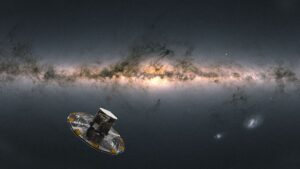On August 6, a Chinese rocket lifted off from the Taiyuan Satellite Launch Center, marking the deployment of the initial 18 satellites for Shanghai Spacecom Satellite Technology’s Qianfan (Thousand Sails) broadband network.
The planned mega constellation will eventually feature up to 1,296 satellites, with future expansion aiming to accommodate as many as 14,000 spacecraft.
The satellites were successfully placed into low Earth orbit at roughly 500 miles above the Earth’s surface. However, shortly after deployment, the rocket disintegrated, resulting in a debris field with hundreds of fragments orbiting the planet, as reported by the United States Space Command (USSPACECOM).
USSPACECOM has identified no immediate threats and maintains regular conjunction assessments to ensure the safety and sustainability of space operations.
At the onset of the incident, Slingshot Aerospace’s Global Sensor Network was monitoring over 50 fragments of debris. Based in California, Slingshot Aerospace is committed to enhancing the safety and sustainability of space operations.
Subsequently, the volume of tracked space debris increased, with the U.S. Space Command reporting they were monitoring more than 300 fragments.
Leo Labs, a leading tracking organization, has reported discovering over 700 fragments of debris resulting from the recent rocket breakup.
Trackable debris typically includes any object with a diameter of at least four inches. However, many fragments from the recent debris cloud are too small to be effectively monitored.
Additionally, objects within low Earth orbit, an area crowded with satellites, move at speeds of approximately 17,500 miles per hour.
If space debris collides with another object, such as a satellite, it can exacerbate the existing problem of space clutter, potentially creating even more debris.
Due to the high altitude at which the breakup happened, the debris from space will probably remain in orbit for many years.
Some of the debris could persist in low Earth orbit for decades. This is not the first instance of a Long March 6A rocket, weighing approximately 12,800 pounds without its propellant, exploding in this orbital zone.
On November 12, 2022, a rocket disintegrated shortly after successfully launching the Yunhai-3 weather satellite into orbit.
The event generated 533 identifiable debris fragments, scattered over distances ranging from 198 to 932 miles.
An investigation found that the separation resulted from a malfunction in the spacecraft’s propulsion system.

The European Space Agency estimates that approximately 40,500 fragments of space debris, each measuring at least four inches across, are currently orbiting Earth. Additionally, there are about 130 million smaller particles, each with a diameter of at least one millimeter. As more nations launch spacecraft, these numbers are expected to rise.
Audrey Schaffer, Vice President of Strategy and Policy at Slingshot, emphasized the crucial role of following current space debris mitigation protocols. ‘Such events underscore the need for strict adherence to these guidelines to minimize new space debris. They also highlight the importance of advanced space domain awareness systems to swiftly detect, track, and catalog newly launched objects, enabling effective screening for potential collisions,’ Schaffer stated.







